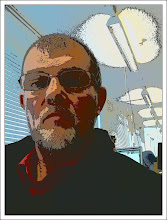Ricardo Baliardo, widely known as Manitas de Plata (Little Hands of Silver), was in the 1960s one of the most renowned flamenco guitarists in the world, and continues to be highly esteemed by aficionados of flamenco.
He was born on August 7, 1921, in a Romani Gitano caravan in Sète in southern France, into the extended family to which the members of the flamenco band, the Gipsy Kings, also belong.
Upon hearing him play at Arles in 1964, Pablo Picasso is said to have exlaimed "that man is of greater worth than I am!" and proceeded to draw on the guitar.
Ricardo was believed to have filled Django Reinhart's place in gypsy music.
___________________________________________________________
Manitas de Plata (petites mains d'argent) est un célèbre guitariste gitan. De son vrai nom Ricardo Baliardo, Manitas de Plata est né le 7 août 1921 à Sète, dans une caravane.
Il est très vite reconnu par les siens comme Manitas de Plata, l'homme aux mains d'argent. Il se distingue chaque année, en jouant de la guitare, lors du pèlerinage gitan des Saintes-Maries-de-la-Mer. Du vivant de Django Reinhardt, il n’ose même pas penser à détrôner celui que l’on considère alors comme le roi de la musique gitane. Dix ans après la mort de Django, il accepte de jouer en public, et le miracle se produit.
A New York, lors d’une exposition de photographies de son ami Lucien Clergue, un admirateur le reconnaît sur un des clichés et le persuade d’enregistrer. Il réalise son premier album dans la chapelle d'Arles. Un manager américain le fait jouer sur la scène du prestigieux Carnegie Hall de New York en decembre 1965.
Gitan illettré, qui ne sait pas lire une note de musique, il conquiert le monde. En mars 1964, un soir de corrida à Arles, Picasso, après l’avoir entendu jouer, s’écrie : « Il vaut plus cher que moi ! ».
I am priviliged to say that I saw Manitas de Plata perform at the Queens Festival in Belfast (I think it was 1968) and it was an unforgettable experience. His playing was superb as you can see and hear from the video posted here. Unfortunately his recordings are no longer played on radio but I am glad to see that he has not been forgotten. I also visited Sète a few years ago not knowing that I was near his birthplace - there is nothing to indicate that he was born there. Perhaps when he dies they will erect a statue in his memory.

